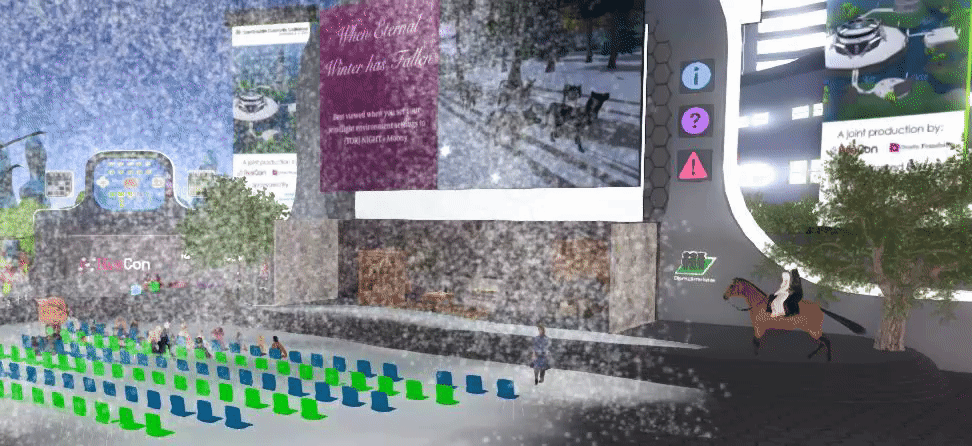Every year, delegates flock to the Open Simulator Community Conference grid, for a weekend of information and innovation, in a very special space. The presentations are very useful, of course, but this event also offers a great opportunity in terms of your personal links with the community. You can reconnect with friends you may have lost touch with. You can have fun spotting the many well-known names in the audience, and make new connections with interesting people. It’s exciting to arrive on the grid and see the crowd forming, but have you ever stopped to notice the layout of the Keynote regions?
Perhaps you have been puzzled by the sim crossing warnings. What’s going on here?
The Keynote area of the OSCC grid is, in reality, four sims.
Why is that? The reason is simple. As we all know, every avatar on a region creates a certain amount of lag, as the person’s viewer and the region server communicate with one another. By using 4 regions instead of just one, it’s possible to reduce the lag that everyone experiences. In theory, an opensim region can hold about 100 avatars, but more than 60 people on one sim is a rare and often a very laggy experience for all. The audience at the OSCC is typically around 100 persons – sometimes a lot more! – so, by spreading the public out across four regions, it’s possible for everyone to have a pleasant and relatively lag-free experience during the event.
In addition, the design of the Keynote regions is deliberately kept clean and simple. The light modern structures, low-poly trees, and the abstract art (changed annually by OSCC team member Juliette SurrealDreaming) make a pleasing backdrop to the main auditorium area, without adding any lag which would distract from the interesting presentations being given in the Keynote space.




